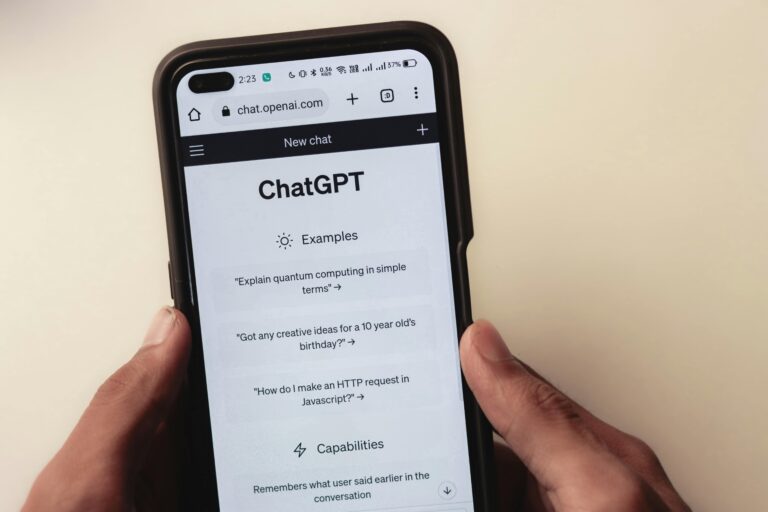Blog vs. Docs vs. Calculator: Picking the Forms AI Actually Uses
Good ideas die in the wrong container. You publish a thoughtful blog post; answer engines surface a competitor’s 200-word glossary entry and a crisp comparison table. Nothing’s “wrong” with your writing—the format just doesn’t match the job the reader (and the model) is trying to do.
The fix for things like this used to be “add more prose.” (And yeah, that’s why we have recipes online that start with a fifty page travel log and an explanation of what “poaching” means.)
But in the age of LLMs, the fix is format discipline: Matching intent to form and packaging the answer so a machine can quote it and a human can act on it. Then, let the blog stitch the pieces into a story.
Format discipline starts by matching the reader’s job to the shape models prefer. For example, if the user wants to know what it is, ship a short definition doc; if they need steps, give them a numbered how-to; if they must choose, lead with a comparison table; if they want a number, build a calculator; and if they’re stuck, use a decision tree. Most “thought pieces” belong in the blog only after the answer to one of these questions exists elsewhere.
Let’s flesh out this idea with example, say, choosing a webinar/virtual event platform. A content plan might look like this:
- First, a one-screen doc that defines what “enterprise webinar platform” means (registrations, live hosting, recording, integrations with CRM/MA) and what’s out of scope (consumer streaming, internal town-hall tools).
- Next, a comparison table to help teams decide between three vendors with clear criteria: Attendee cap, recording quality, SSO/SSO, integrations (Salesforce/HubSpot/Marketo), latency/reliability SLAs, moderation tools, and price model.
- When finance asks “what will this actually cost us?”, a calculator turns inputs (expected registrants, show frequency, overage risk, add-on features) into a monthly/annual estimate with assumptions spelled out.
- Finally, the blog post arrives—not to carry the answer, but to connect the assets, explain trade-offs (feature depth vs. reliability vs. cost), and tell the story of how one team migrated platforms without tanking attendance.
Following user intent, then, is the spine. Around it, the production rules help to fulfill that intent with the least friction: Make pages easy to quote (answer first, one idea per paragraph, real structure on the page), route ideas before you draft (what job, what evidence, what’s the next step), and let the blog do what it’s best at—narrative and synthesis after the answers exist.
The Formats that Win
A definition page wins because models need a clean anchor: One name, one meaning, one screen. It sets the boundaries (“this includes integrations and SLAs; it excludes basic livestream tools”) and gives two or three authoritative pointers so a machine—and a buyer—knows you’re grounded.
A stepwise how-to wins because procedures are safest to quote when they’re numbered and verifiable. “Enable SSO for webinar registrants” reads like a checklist with a success check at each step; there’s no guesswork, so engines and humans trust it.
A comparison page wins because decisions are tables first, prose second. Put criteria down the left, options across the top, and follow with a short “Choose A if / Choose B if” note. The structure does the heavy lifting; the copy just clarifies the trade-offs.
A calculator wins because numbers settle arguments. When budget holders ask “Is vendor X worth it?”, inputs + formula + output + caveats turn opinions into a repeatable estimate. Models can summarize it; humans can defend it.
A troubleshooter wins because branching logic reduces ambiguity. A vague problem like “Attendees can’t join” becomes tractable with a decision tree: Browser issues vs. SSO misconfig vs. region block, with a simple action for each branch and a clear escalate point.
At the end of this pieces, I’ll provide some very simple templates or “blueprints” for these kinds of content pieces.
Making Formats “AI-Selectable”
For as clever (and lightning fast) as most LLM are, they are still relatively dumb when it comes to digesting prose. OK, maybe not dumb, but they certainly have a bias towards things that are simple, clear, and linear. (In fact, they would hate that I started the section with this paragraph, and would much prefer the coming bulleted list…) So how do you use that to your advantage?
- Open each asset with the answer in one clean sentence—the claim up top.
- Keep paragraphs to a single idea so models don’t merge concepts
- Put structure on the page: Real tables for comparisons, numbered lists for steps, visible inputs for calculators.
- Point to at least one piece of evidence a model can cite—vendor docs, standards, or live examples.
- Name entities consistently (canonical product and feature names, common synonyms) so you’re unambiguous in the model’s graph.
Pulling it Together with the Webinar Example
So image that you are company selling a webinar platform. What should be on your website?
Produce the definition doc first so buyers and models agree on terms. Follow with the comparison page—attendee cap, integrations, latency/recording, SLAs, moderation, pricing—so product, marketing, and IT can decide quickly. Add the calculator when budget holders want a number. Then publish a short blog post that connects the three assets: Why the definition matters, how the table works, and how the calculator changed the internal debate. Each asset does a single job; together, they cover the problem space. Formats that match intent get surfaced—you’ll see it in answer engines, and you’ll feel it in faster decisions.
Does this Sound Boring? Yeah, It Is
Formats are boring. Tables are boring. Checklists are boring. You know what isn’t boring? Watching a competitor’s throwaway glossary entry outrank your 1,500-word masterpiece in every AI answer on the planet. Models don’t reward vibes; they reward structure. If the answer isn’t visible, quotable, and backed by a receipt, you’re volunteering to be invisible.
The truth is unsexy: Pick the right container, say the thing cleanly, show your work, move on. Do it again next week. That’s how you win inclusion, and how your buyers make decisions without needing a Zoom call and a priest.
If you want help turning good ideas into answer-shaped assets while still keeping your thought leadership on a tight schedule, that’s what we do at Words Have Impact. Let’s talk.
Copy/Paste Templates
Definition / “What is…?”
- Definition: {1–2 sentences, plain language}
- Scope: {included / excluded; common confusion}
- See also: {2–3 links to standards / vendor docs / deeper how-to}
- FAQ:
- {Q1?} {A1 in 1–2 lines}
- {Q2?} {A2}
- Canonical names: {primary name}; Synonyms: {alt names}
How-to (steps)
- Prerequisites: {roles, versions, permissions}
- Steps:
- {Step} → Check: {what success looks like}
- {Step} → Check: {…}
- Constraints: {limits/timeouts/safety}
- Result: {expected end state} • Verify: {how to confirm}
- References: {policy/spec/example}
Comparison
- Use this when choosing between: {A, B, C}
- Table: Criteria ↓ vs Options → (fill cells with short, factual entries)
- Decision note: Choose A if {…}; B if {…}; C if {…}
- Assumptions: {scale/region/compliance} • Evidence: {links}
Calculator
- Inputs: {name, unit, default} × N
- Formula: {inline or linked}
- Output: {primary number} — {one-sentence meaning}
- Assumptions & caveats: {bullets}
- Export: {copy/download}
Troubleshooter / Decision Tree
- Symptoms: {list 3–5}
- Branches: If {symptom/state} → Do {action} → Check: {result}
- Escalate when: {conditions} • Capture: {IDs/logs/screenshots}
- Fix links: {short links}
Brandon N. Towl is an SEO strategist and content expert who helps companies stand out in both traditional search and emerging AI-driven discovery. He is the founder of Words Have Impact, a content agency, and Human Driven Understanding, a consultancy focused on buyer insights and strategy.






